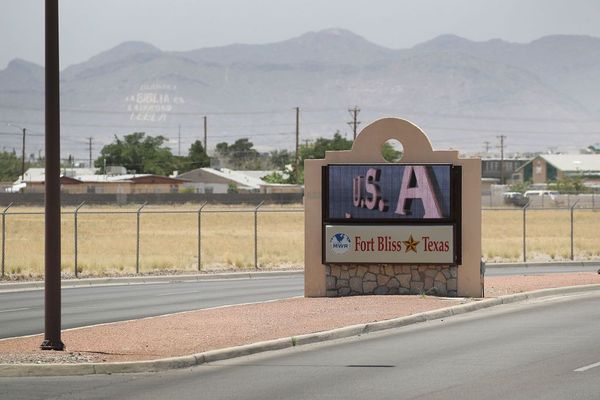
For the last decade or so, it has sometimes seemed as if Hollywood has lost its grandest ambition—not merely to entertain, provoke, or create art, but to pursue and portray America's national myths, to reflect the nation back on itself in new and revelatory ways. In 2024, however, we got two such attempts.
The first was aging legend Francis Ford Coppola's ill-conceived spectacle, Megalopolis, a movie that recast New York City as a modern vestige of the Roman Empire. Megalopolis was weird and wooden and flat-out bizarre in almost every aspect, but even in its failure, there was something vital about it, an urgency about taking life and society and the idea of the future seriously.
The second is The Brutalist, from the up-and-coming filmmaker Brady Corbet. Corbet is still in his 30s, and if The Brutalist is any indication, he has the sort of cinematic vitality that Coppola's self-financed flub demanded. Yes, unlike Coppola's sci-fi scenario, Corbet's film is a look back at America's post-war period, the story of a Hungarian Jewish immigrant who comes to America after losing much to the war. But it is also a movie with a relentless forward drive, about the power to transcend history and horrors, to forge one's own path and identity, even and perhaps especially in the shadow of trauma. It's a movie about artistic ambition and the will to create, and it's almost certainly the best movie of 2024.
The Brutalist draws its name from the school of mid-century architecture associated with sleek, imposing concrete block buildings. But it's also designed with a double meaning in mind, a reference to the succession of horrors and indignities faced by its title character, the fictional architect László Tóth (Adrien Brody). Tóth is a survivor of the Holocaust, and while he has made it to American soil, his wife remains in Europe, blocked by the labyrinth of immigration bureaucracy.
One way to look at the film is as a tale of immigrant grit and greatness. The movie opens with Tóth arriving in New York. Before he goes through customs, he stares up at the Statue of Liberty—only in Corbet's shaky, warped view, he sees it upside down.
The movie's question, then, is what one makes of life once arriving on U.S. soil. Using transportation funds provided by the government, Tóth makes his way to Philadelphia, where he has a cousin, Attila (Alessandro Nivola). Attila has opened a small furniture business, Miller and Sons, despite having no children, because, he says, the locals prefer a family business. He's changed his name, married an American woman, and he says he's Catholic—shedding his Jewish identity and replacing it with a sort of costume of Americana.
Tóth, in contrast, finds an opportunity to recreate America in his own image rather than the other way around. He's hired to install a library in the home of a local wealthy man, Harrison Lee Van Buren (Guy Pearce), who initially rejects the work. But after Look magazine gives the library space a glowing review, Van Buren returns to Tóth, engaging him for a much larger work: a community center in Doylestown, Pennsylvania.
The catch, it turns out, is that Tóth is expected to make the center reflect Christian identity, with a chapel and religious symbols, affirming their identity rather than his. And so he begins a long quest to build a structure that will reshape their world—but is, we discover, entirely intended as a monument to his own past, his own brokenness, his own grief, his own pain. He infuses his work with his own, deeply personal, almost cryptographic symbology.
Tóth's pain, however, is not merely a memory. Eventually, Tóth's wife and niece make it to the U.S., and it turns out that they, too, have been damaged by the war and its atrocities. His wife, Erzsébet (Felicity Jones), is wheelchair-bound thanks to osteoporosis induced by famine, and his niece Zsófia refuses to speak. Van Buren, meanwhile, continues to be a temperamental figure at best. He is eventually revealed to be something far worse, another brutality to be endured in a life that sometimes seems like nothing else.
Corbet and cinematographer Lol Crawley photographed The Brutalist in VistaVision, a process dating to the 1950s in which 35mm film stock is shot vertically to create a more imposing frame. In select markets, the film is being screened in 70mm, a larger film format designed to show off those enhanced images. The canisters for the 70mm print reportedly weigh upwards of 300 pounds, in part because the film is also more than three and a half hours long, including a 15-minute scheduled intermission with a countdown clock.
Even that intermission adds background detail to the story, for the clock counts down over a wedding photo from Tóth's pre-war days, showing the cosmopolitan life that was taken from him. The intermission is not just a break; it's a time to reflect on his loss, built into the structure of the filmgoing experience.
The literal weightiness, the length, the unusual cinematic process—they all add up to a demand to be taken seriously, and it might seem pompous or ridiculous, like Megalopolis, if it weren't so magnificent. In every shot, every line, every tiny interaction, every subtle detail, and grandiose image, The Brutalist is great American cinema.
The post <i>The Brutalist</i> Is Great American Cinema appeared first on Reason.com.







